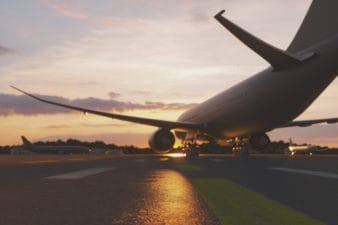The Ministry of Finance has hinted that it will hike contribution limits on tax-free savings accounts (TFSA), and the news could completely alter how Canadians manage their money.
The current cap for cash going into a TFSA is $5,500 a year. However, a confidential letter from Finance Minister Joe Oliver all but confirms that he will double the contribution limit for the government’s popular savings vehicle.
When the TFSA was born in 2008, it was celebrated as a way to stash cash that was out of the taxman’s reach. It was intended to increase the appeal of saving up for a rainy day or a major purchase.
However, if the contribution ceiling is raised to $11,000 a year, the TFSA could become a major tool for larger goals like retirement, too. That’s big news for savers. If Mr. Oliver’s proposal goes ahead, the books on Canadian personal finance will have to be rewritten.
Unfortunately, many folks are still unsure as to how to fully take advantage of these wonderful inventions. So, to help you get the most out of your TFSA (and avoid getting into trouble with the CRA), I’ve put together a list of dos and don’ts. Here they are.
1) Don’t over-contribute
In 2015 you can contribute $5,500 to your TFSA, plus any carry-forward room from previous years and any amounts withdrawn in the past that have not been replaced. After this, any dividends, interest, or capital gains you earn are tax-free. However, you will be penalized if you contribute above this ceiling. To find out your personal limit, check your account at the CRA website.
2) Don’t over-think the RRSP/TFSA debate
If you’re saving for retirement, picking between a TFSA and a Registered Retirement Savings Plan (RRSP) can be a challenge. There’s no tax break for a TFSA, but you keep all of the money you withdraw from your account. The RRSP gives you an immediate tax deduction. However, you’ll have to pay taxes on any withdrawals.
You should consult a tax professional to determine what’s best for you. As a general rule, TFSAs are preferable for those who expect their income will be higher in retirement. RRSPs are preferable if you expect your tax rate to be lower in retirement.
3) Don’t use your TFSA as a savings account
The “S” in TFSA has become a bit of a misnomer. That’s why many people treat them as a glorified savings account, keeping most of their funds in things like cash and Guaranteed Investment Certificates.
Low risk? Sure. But the returns are pitiful. However, it’s only when you combine higher returns with tax-free growth that you really unlock the wealth-building power of TFSAs. That’s why if you have a long-term investment horizon, you should consider holding stocks, bonds, and REITs in this account.
4) Do clip bond coupons
Bonds and other interest-earning securities like the iShares DEX Universe Bond Index Fund (TSX:XBB) are some of the highest taxed income sources around. That’s why it’s a good idea to shelter fixed-income assets inside your TFSA.
5) Do hold dividend stocks
However, there’s one flaw in the argument that only fixed-income securities should be in your registered accounts: It ignores the rate of return. With yields near historic lows, you’re not saving much tax by stuffing interest-paying securities inside your TFSA. In fact, you could save more in taxes by sheltering your stocks instead.
As regular Motley Fool readers know, I’m a big fan of dividend growth stocks like Suncor Energy Inc (TSX:SU)(NYSE:SU) and the Toronto-Dominion Bank (TSX:TD)(NYSE:TD). They’re highly competitive, cash-rich businesses with growing dividends. Investing in stocks like these allows you to compound your money at high rates over decades.
6) Do collect rent cheques
Real estate investment trusts (REITs) allow you to collect monthly rental income without becoming a landlord. You could think of these firms like real estate holding companies. They own properties, collect rent from tenants, and pass on the income to investors.
I frequently tout REITs here at the Motley Fool and own them myself through the iShares S&P/TSX Capped REIT Index Fund (TSX:XRE). However, because of the way these trusts are structured, you have to pay higher tax rates on distributions than ordinary stock dividends. That’s why REITs should be sheltered from the taxman inside your TFSA.
7) Don’t own U.S. equities
However, there is one investment you should never put in your TFSA—U.S. dividend stocks. The American government charges a 15% withholding tax on any dividends paid out to foreign investors. In RRSPs, these withholding taxes don’t apply. In taxable accounts, you can apply for a Canadian tax credit on withheld dividends. However, there’s no way out of paying Uncle Sam in your TFSA.








